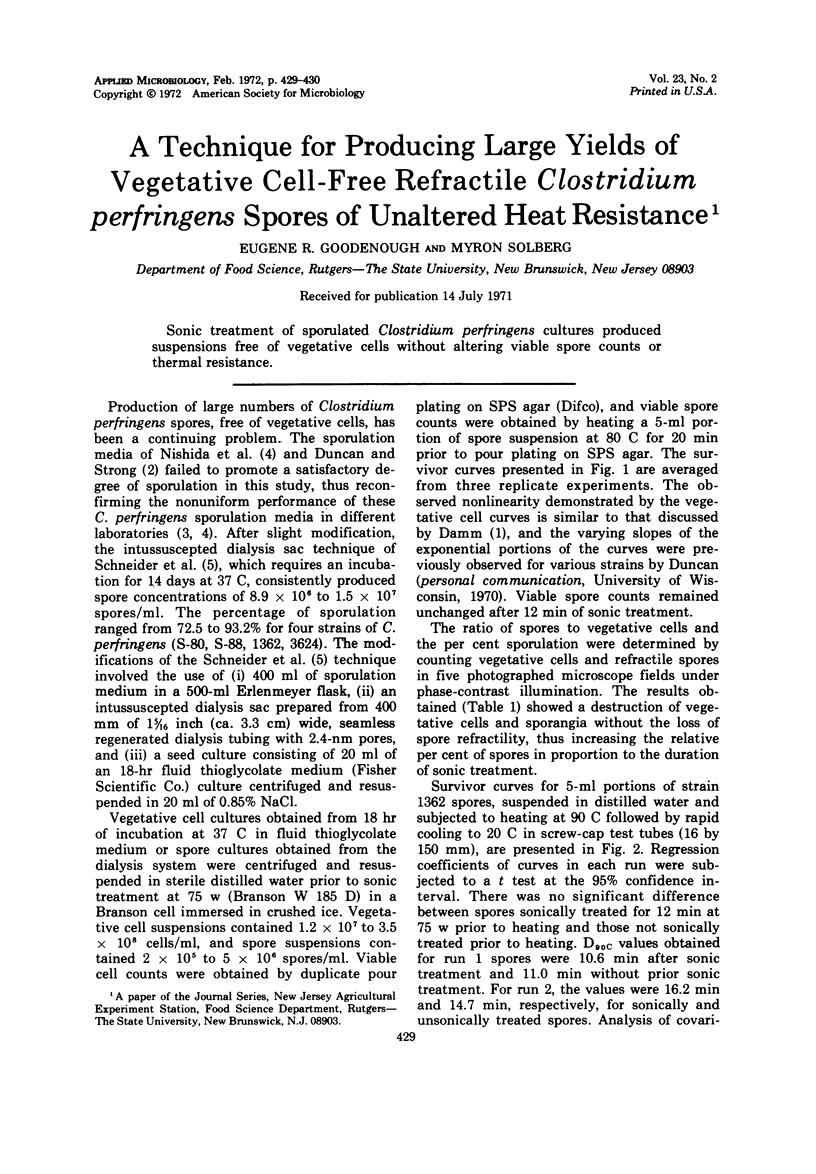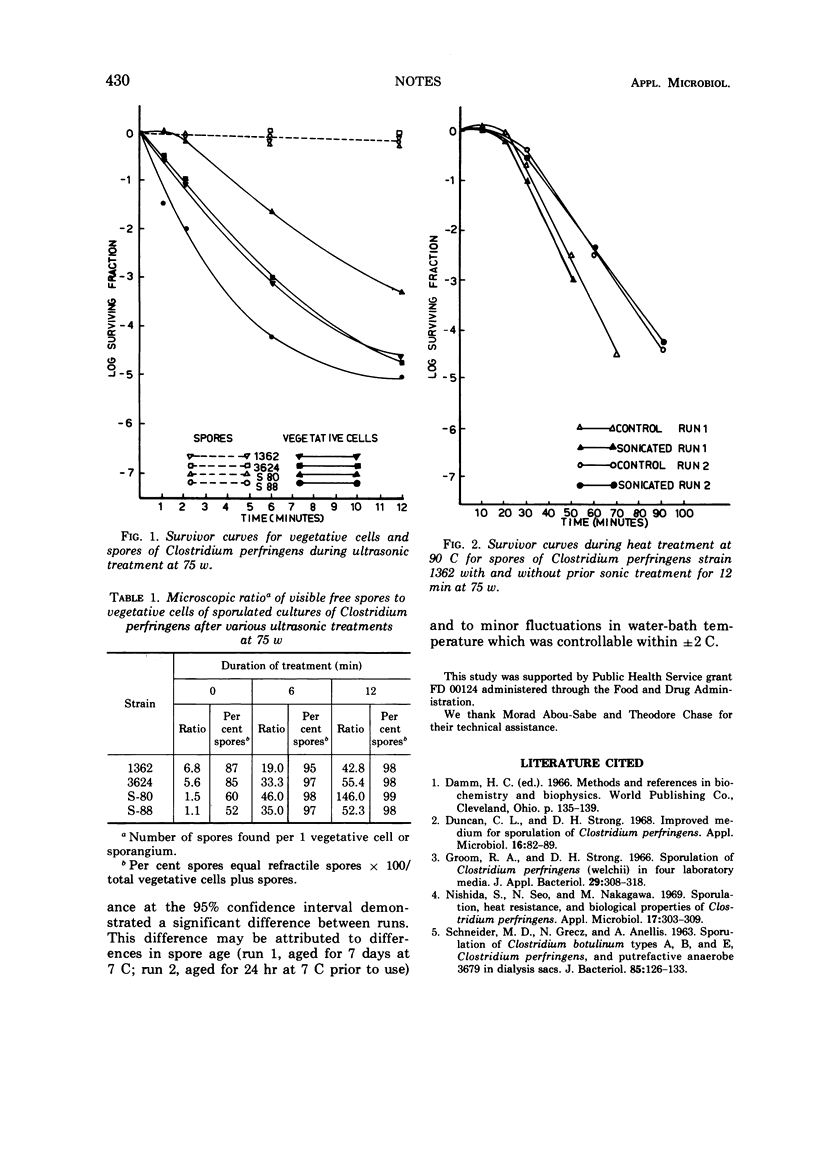Abstract
Sonic treatment of sporulated Clostridium perfringens cultures produced suspensions free of vegetative cells without altering viable spore counts or thermal resistance.
Full text
PDF

Selected References
These references are in PubMed. This may not be the complete list of references from this article.
- Duncan C. L., Strong D. H. Improved medium for sporulation of Clostridium perfringens. Appl Microbiol. 1968 Jan;16(1):82–89. doi: 10.1128/am.16.1.82-89.1968. [DOI] [PMC free article] [PubMed] [Google Scholar]
- Groom R. A., Strong D. H. Sporulation of Clostridium perfringens (welchii) in four laboratory media. J Appl Bacteriol. 1966 Aug;29(2):308–318. doi: 10.1111/j.1365-2672.1966.tb03481.x. [DOI] [PubMed] [Google Scholar]
- Nishida S., Seo N., Nakagawa M. Sporulation, heat resistance, and biological properties of Clostridium perfringens. Appl Microbiol. 1969 Feb;17(2):303–309. doi: 10.1128/am.17.2.303-309.1969. [DOI] [PMC free article] [PubMed] [Google Scholar]
- SCHNEIDER M. D., GRECZ N., ANELLIS A. Sporulation of Clostridium botulinum types A, B, and E, Clostridium perfringens, and putrefactive anaerobe 3679 in dialysis sacs. J Bacteriol. 1963 Jan;85:126–133. doi: 10.1128/jb.85.1.126-133.1963. [DOI] [PMC free article] [PubMed] [Google Scholar]


